The Ultimate Guide To The New York City Marathon
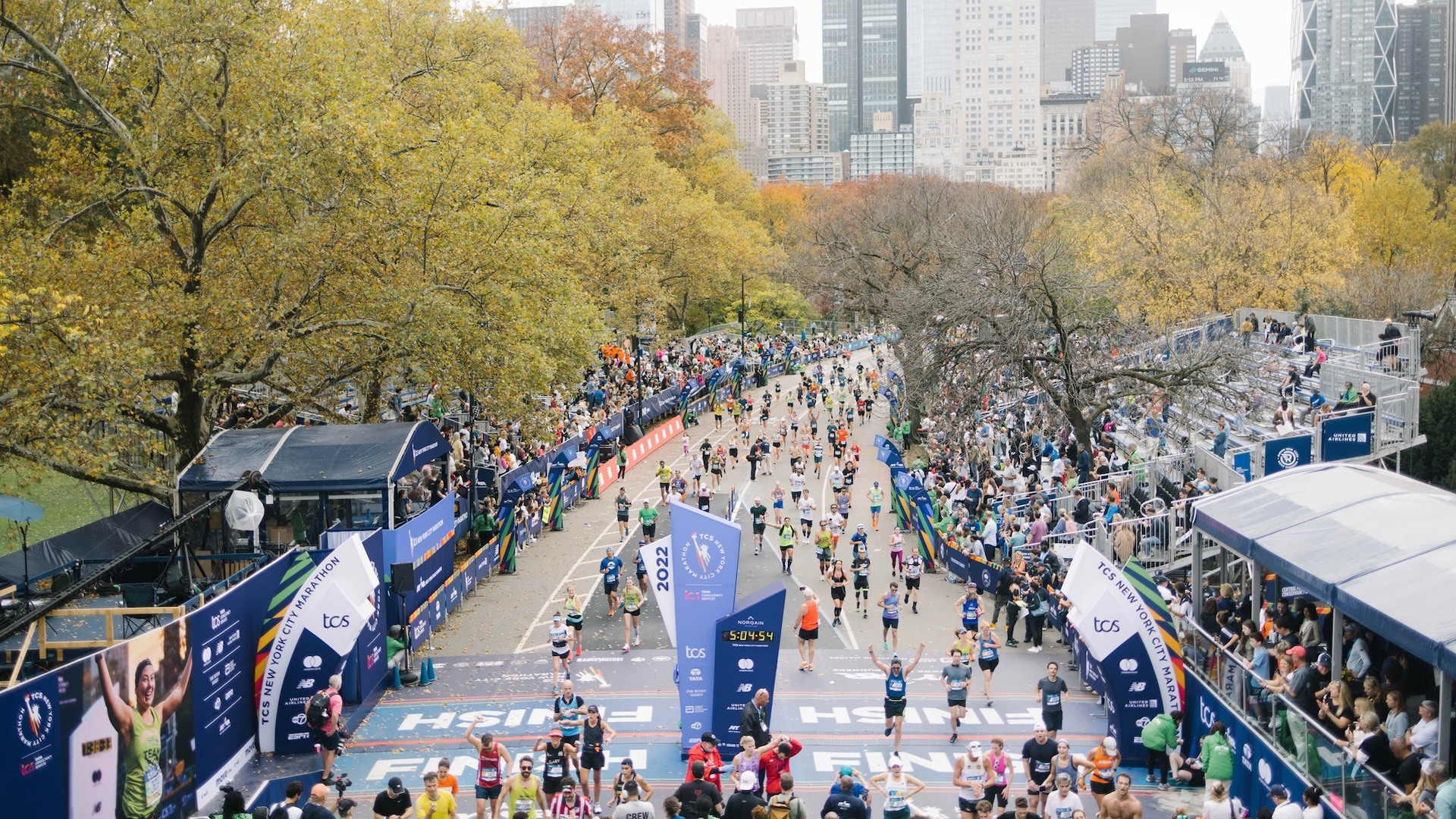
The TCS New York City Marathon takes place in early November and is the final Abbott World Marathon Major race of the year. In this ultimate runner’s guide to the New York City Marathon, we’ll cover:
- What’s special about the New York City Marathon?
- All the general things to know about the New York City Marathon
- The New York City Marathon Expo & packet pick up
- Things to take to the start line of the New York City Marathon
- Getting to the start of the New York City Marathon
- The staging area & start of the New York City Marathon
- The New York City Marathon course
- Supporting the New York City Marathon
- The bag collection and meeting points after the New York City Marathon
- How to enter the New York City Marathon
WHAT’S SPECIAL ABOUT THE NEW YORK CITY MARATHON?
The New York City Marathon was first run in 1970 as laps around Central Park, before the route changed in 1976 to take in all five of the city’s boroughs: Staten Island, Brooklyn, Queens, the Bronx and Manhattan, with an incredible finish in Central Park. It’s put on by the New York Road Runners (NYRR).
More than two million spectators come out to watch and cheer, which makes it one of the most-watched public sporting event in the world, which helps over 50,000 runners to complete their marathon. A lot of runners say the support in New York is the best in the world.
The 2024 New York City Marathon is the 53rd running of the race and it takes place on Sunday 3 November. The elite women begin at 8.35am and the men run at 9.05am, with the first wave of the mass start going at 9.10am.
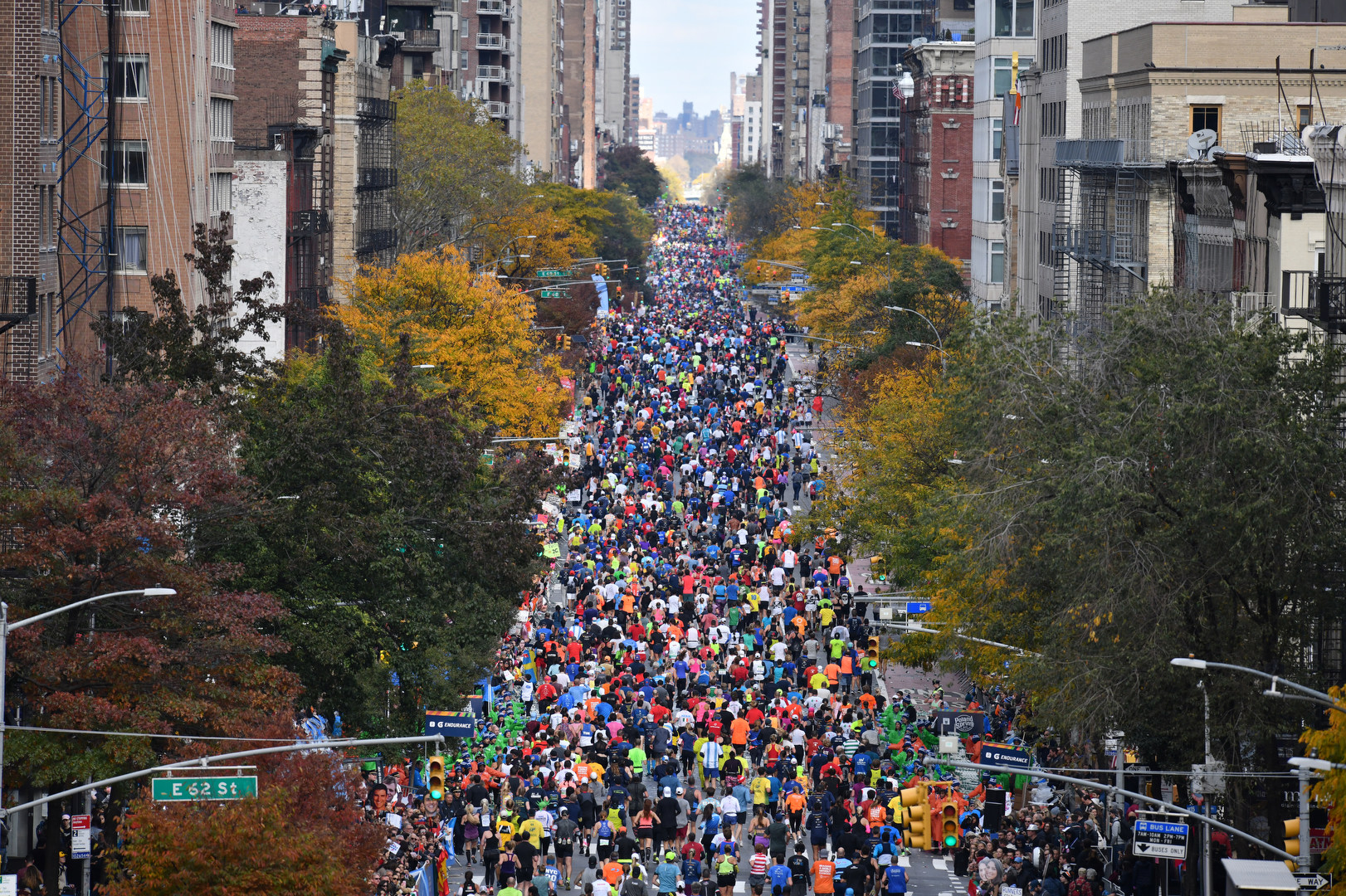
ALL THE GENERAL THINGS TO KNOW ABOUT THE NEW YORK CITY MARATHON
One thing you’ll almost certainly have heard is that it’s not a flat course. It’s got a lot of ups and downs, mostly over bridges, and then in Central Park. It’s possible to run personal bests in NYC, but success in the race requires you to run a controlled pace, not pushing too hard on the way up or trying to make up time on the way down. The NYC Marathon course records for elites are the slowest of all the majors.
It’s a huge race, routinely the largest marathon in the world. It means that for the entire race you’ll be surrounded by others. Gradually through the race you’ll settle into the right pace, and with people running a similar speed to you, but the initial miles can be crowded.
There are five start waves (more on them later) ranging from 9.10am to 11.30am. But you’ll likely get to the start before 7.30am. Be prepared for a long wait in the start area, and plan ahead for the food and clothing you’ll need during that time.
Your race bib will tell you what colour your start is (blue, orange or pink), your wave (1-5) and corral (A-F). Again, more on this later.
The weather is typically good. There’s only been significant rain on race day twice in the past 40 years. The average temperature range is 46F/8C to 60F/16C, but the morning could be 32F/0C and it could get as warm as high 70s/high 20s. Check the forecast ahead of the race and dress appropriately (but remember it’ll be cold in the morning).
The crowds are loud and amazing, and they are throughout the course. Put your name on your top and spectators will cheer for you the whole way around and you’ll feel like a superstar!
You cannot run in bulky costumes or in costumes which cover your face. You can run in formfitting costumes.
The race uses mile markers along the course, with each 5km and the halfway mark also having a marker.
Hydration stations begin from mile 3 and are roughly every one mile after that (close to mile markers). Water and Gatorade Lemon-Lime are available on the course. These are provided in recyclable cups and are always on both sides of the street. If you plan to drink the Gatorade then practise using it in training.
Science in Sport GO Isotonic Energy Gels are available at miles 12 and 18. There will be multiple flavours on the course: Orange, Pineapple, Tropical, Apple, Berry (Caffeinated), and Citrus (Caffeinated). Make sure you practise taking these gels in training. Remember: nothing new on race day!
Alongside each hydration station, there’s a medical tent and toilets.
Hydration belts and hydration vests with bottles in the front are allowed in the marathon (but you cannot wear a vest/pack with a large bladder in the back).
Headphones are allowed at the NYC Marathon, but the crowds are amazing, so listen to them cheer instead!
The City That Never Sleeps wakes up late on Sunday morning, so plan and prepare your race breakfast in advance and don’t rely on being able to get something on your way to race transportation at 5am (or even on your hotel providing food that early).
There are pacers from 3:00 to 6:00 (every 0:15 in between). You can see what corrals and waves the pacers run in here.
The race has a generous finish time and cut off, with a sweeper travelling at 7:00 pace following the final wave (that’s 16 minutes per mile). Streets begin to reopen after the sweeper passes. If the sweeper passes runners, they are able to continue their marathon on the sidewalk. The official end of the marathon is 10pm.
The race usually falls on daylight savings. This is good news as you get an extra hour of sleep. Remember: the worst thing that could happen if your clock doesn’t change is that you wake up an hour early.
As the clocks go back for daylight savings, it means sunset is earlier – it’ll be sunset just before 5pm on race day. Runners who take more than five or six hours may be finishing in the twilight or dark, but the course is well lit up and turns into a party later in the day!
There are lactation spaces for postpartum participants. These are available pre-race and post-race. Details can be found here.
THE NEW YORK CITY MARATHON EXPO, PACKET PICK UP & BAG DROP
A few important things to know here which are specific to New York.
To go to packet pick, you need to select a time to attend the Expo (ideally you stick to this time, but if you’re delayed then you don’t get rejected!).
You must collect your own packet and bib number at the Expo, and you must take photo ID with you to collect your bib.
Non-runners can attend the Expo.
There is no bag drop available on race day. This is a big one. If you wish to have a Pre-Check Bag, you must choose this option ahead of the race and then take your checked bag to Rumsey Playfield in Central Park on Friday or Saturday from 0900-1700. This bag will be for things like post-race nutrition and clothing that you know you’ll need at the finish. (All runners get a Start Village Bag to take with them on race morning).
The Expo is at the Javits Centre. The opening times are as follows, and packet pick up closes 30 minutes before the end of each session:
Thursday 31 October: 1000-2000
Friday 1 November: 1000-2000
Saturday 2 November: 0900-1700
It’s a huge Expo but it’s very well organised and there’s a lot of exhibitors from the running world to check out. If you like Expos, then plan to spend a few hours (if you hate them, then you can efficiently get in and out pretty quickly, and it’s best to go early in the week!).
THINGS TO TAKE TO THE START LINE OF THE NEW YORK CITY MARATHON
When you collect your race packet, you’ll have a clear plastic Start Village Bag. This is the only bag which you can take with you to the start line (unless you’re running in a hydration vest). There’s a list of prohibited items which you cannot take with you on race day.
As there is no bag drop on race day, everything you take to the start either goes with you on the marathon, or is left on Staten Island.
You should take lots of layers to the start as it may be very cold. Pack sweatpants, a hoodie, gloves and a hat (if it’s a very cold day then the Verrazano Bridge is exposed and could be windy or cold, so you could keep layers/hats/gloves on until you reach Brooklyn). The old clothes that you wear to the start can be donated to charity before the race begins.
Dress appropriate for the weather as there isn’t much shelter in the race staging area, and a lot of it is on grass which might be muddy. This might mean you want to wear old socks, or even old shoes, before changing into race kit.
Take something to sit on. A cheap disposable poncho can be a good thing to pack as you can either wear it or sit on it, and it takes up very little space (if it’s raining then know that umbrellas are on the prohibited list).
You can take a portable charger for your phone (because you don’t want your battery to go flat and miss the post-race photo opportunities!), and if you don’t want to run with the charger then there’s e-waste disposal at the start.
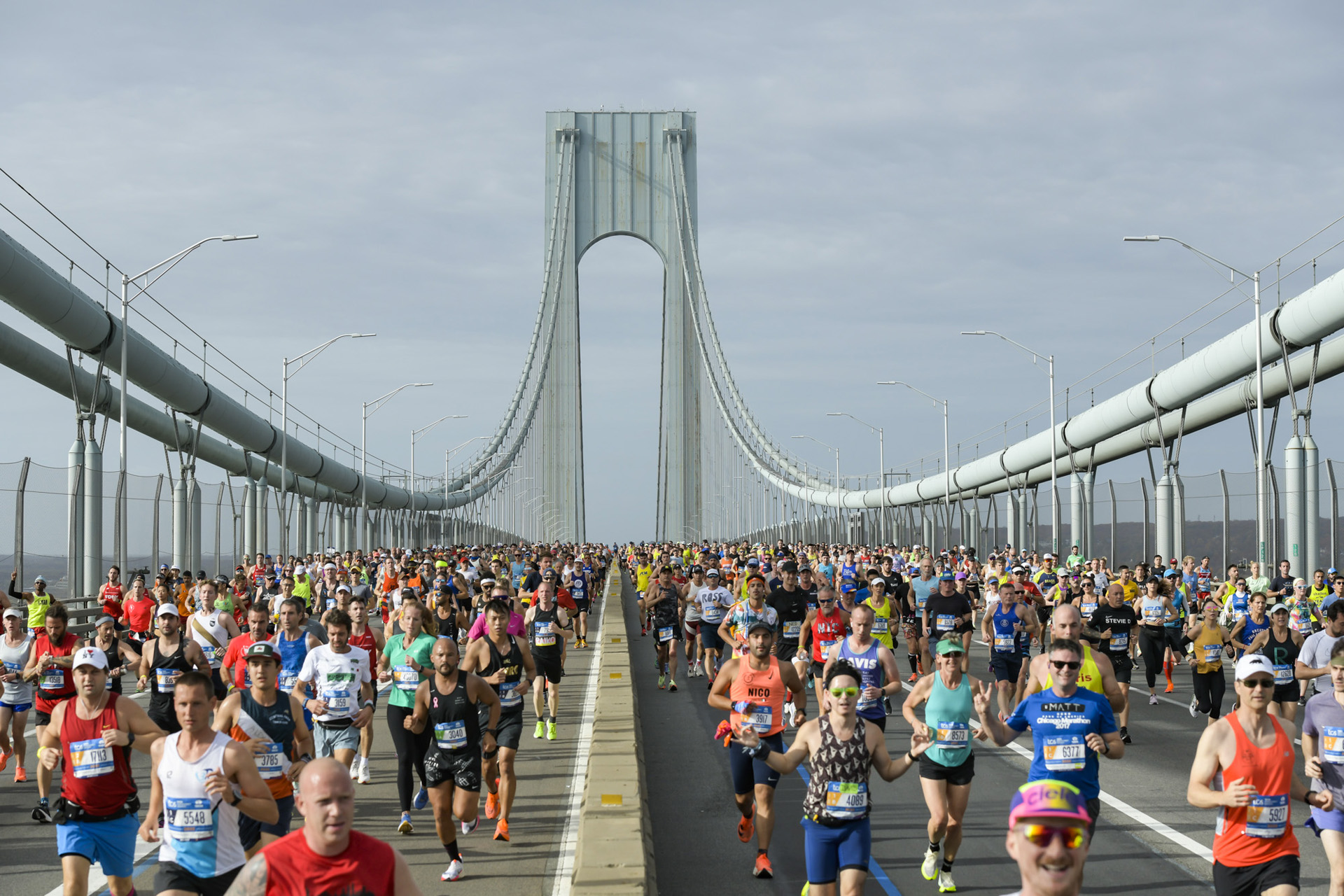
GETTING TO THE START OF THE NEW YORK CITY MARATHON
This will likely be the biggest concern for runners who haven’t done the race before.
There are two main ways to the start: buses from Midtown or New Jersey, or the Staten Island Ferry from Lower Manhattan (it is also possible to stay on Staten Island and walk/cycle/drive to the start area, or take rideshare, but roads can get very busy and some roads close very early in the morning).
If you want transportation, then you need to select this ahead of the race. It’s first come, first served for your preferred choice and time. If you’re staying in the middle or upper Manhattan, then the bus might be your best option, but if you’re staying in lower Manhattan or Brooklyn, then the ferry may be the best option.
The bus takes around 90 minutes. There are toilets in the bus station, but not on the bus.
The ferry is a more iconic NYC experience as you cross the Hudson and pass the Statue of Liberty. There are toilets at the terminal and on the ferry. The ferry is around 25 minutes, but there’ll be queues to get on, and once you arrive, there’s still a short bus ride to the race village, and you’ll need to queue for that. If you get the ferry, go early (especially if you’re in one of the early waves).
Remember that you can only take your clear bag to the start of the race (plus a hydration pack if you plan on wearing one), so don’t try and take your own rucksack or a different bag as you will be stopped by security.
THE STAGING AREA & START OF THE NEW YORK CITY MARATHON
You’re going to be in the start area a few hours before you begin the race. You will go to the Start Village which corresponds with your bib colour.
Plan your food accordingly and take your race breakfast and snacks with you as you’ll likely eat your breakfast on the way to the race or in the race village. It’s good to know that there is free food and drink available at the start, including: water, Gatorade, bagels, Dunkin’ coffee, tea and hot cocoa.
There are 1,700 toilets in the start area and in the corrals, but always take toilet paper to the start, just in case you go into a portapotty without any paper.
There is a lactation space at the start. Details can be found here. There is also a Quiet Zone for anxious runners or those with sensory sensitivities, a Zen Zone for mindfulness and meditation, and there are therapy dogs.
There are three different starts, with a different pre-race village for each. Go to the colour you’ve been assigned: Blue, Orange or Pink. You will also be assigned a start wave and corral with your colour.
For each colour, there are five start waves with six corrals per wave. Corrals close 20 minutes before the start time. There are toilets within the corrals.
The start times for the waves begin at: 0910, 0945, 1020, 1055 and 1130. Your start wave is based on your expected pace, with faster runners starting earlier.
The three colour starts take slightly different routes. Orange and Blue run on the upper level of the Verrazano Bridge and Pink is on the lower level (if you’re in pink, don’t worry – you can still get a great view over to Manhattan, plus there’s less incline if you’re on the lower level!).
The start colours are kept separate until Blue and Orange come together at mile 2.4, with Pink alongside them, then everyone runs together from mile 8.
There is a team of pacers from 3:00 to 6:00. You can see what corrals and waves the pacers run in here.
THE NEW YORK CITY MARATHON COURSE
Helicopters fly over, some canons fire, and when Frank Sinatra’s ‘New York, New York’ plays, it’s time to run!
This is the hilliest of the Marathon Majors, and there are rarely any truly flat sections, so it can be hard to find a running rhythm. If you want to train well for the NYC Marathon then find undulating routes with three or four significant long uphills and downhills.
The first of the hills is the steepest, longest and highest, so the gun goes and you run up, up, up over the Verrazano-Narrows Bridge. It’s around three-quarters of a mile of climbing (just over 1km), at an average grade of around 4% (so practise this in training!). It’s technically one of the hardest mile on the course, but with the excitement of the race starting, and with the crowds around you, it doesn’t feel that hard. Just take it easy and don’t worry about your pace here.
In the middle of the bridge you crest the highest point and it’s a one-mile downhill with a similar gradient. Don’t try to catch up your splits as there’s still 25 miles to go to be able to do that.
One warning if you’re in one of the later waves: some runners may head to the left of the bridge to see the view over Manhattan, or even take a photo. If you want to avoid this then stick to the right hand side.
The crowds grow through Brooklyn, so don’t be surprised if the end of the bridge is quiet – the people are up ahead. Stay calm and steady here.
At mile 8, all three start colours merge, but it happens on a corner, and can slow things down (even to a brief stop). Just be prepared in this section and for the next mile or so, that it’s going to be busier, but this is also one of the loudest and most fun parts of the course with its crowd support.
At halfway you cross bridge number two, the Pulaski Bridge, but it’s only around a quarter mile and it’s not as steep or high as the Verrazano, so just try to remain controlled as you cross over. You’re now in Queens.
The Queensboro Bridge is the third bridge and it’s a tough one. It comes at 15 miles and it’s a steady incline for over half a mile. The bridge is also quiet as there are no spectators allowed on the bridge. On the long downhill on the other side, you come into Manhattan.
On 1st Avenue, in particular around miles 16 and 17, you get to one of the loudest and busiest sections on the course for spectators.
Just after mile 19 you cross the Willis Avenue Bridge into the Bronx, where there’s a change in music and vibes, with generous support as you take some tighter turns before crossing over the Madison Avenue Bridge back into Manhattan. Neither Bronx bridge is too steep or too long, so nothing to worry about there.
Back through Manhattan, you run alongside Central Park for the first time at about 22.5 miles, and that’s when you hit the 5th Avenue climb. It’s almost a mile long, and while it’s only about a 2% gradient it can feel like it’s 12%! If you’re racing or chasing PBs, this can be an especially hard section, coming so late in the race.
Next you run into Central Park and through it, so try and enjoy the sights while your legs are dealing with more hills. The crowds are brilliant through to the end of the race, but remember you exit the park onto West 59th and then run three blocks east before going back into the park again with about half a mile to go.
As you turn back into the park, you’re so close now and the crowds peak in volume, which is hopefully enough extra energy to carry you (slightly uphill) to the finish.
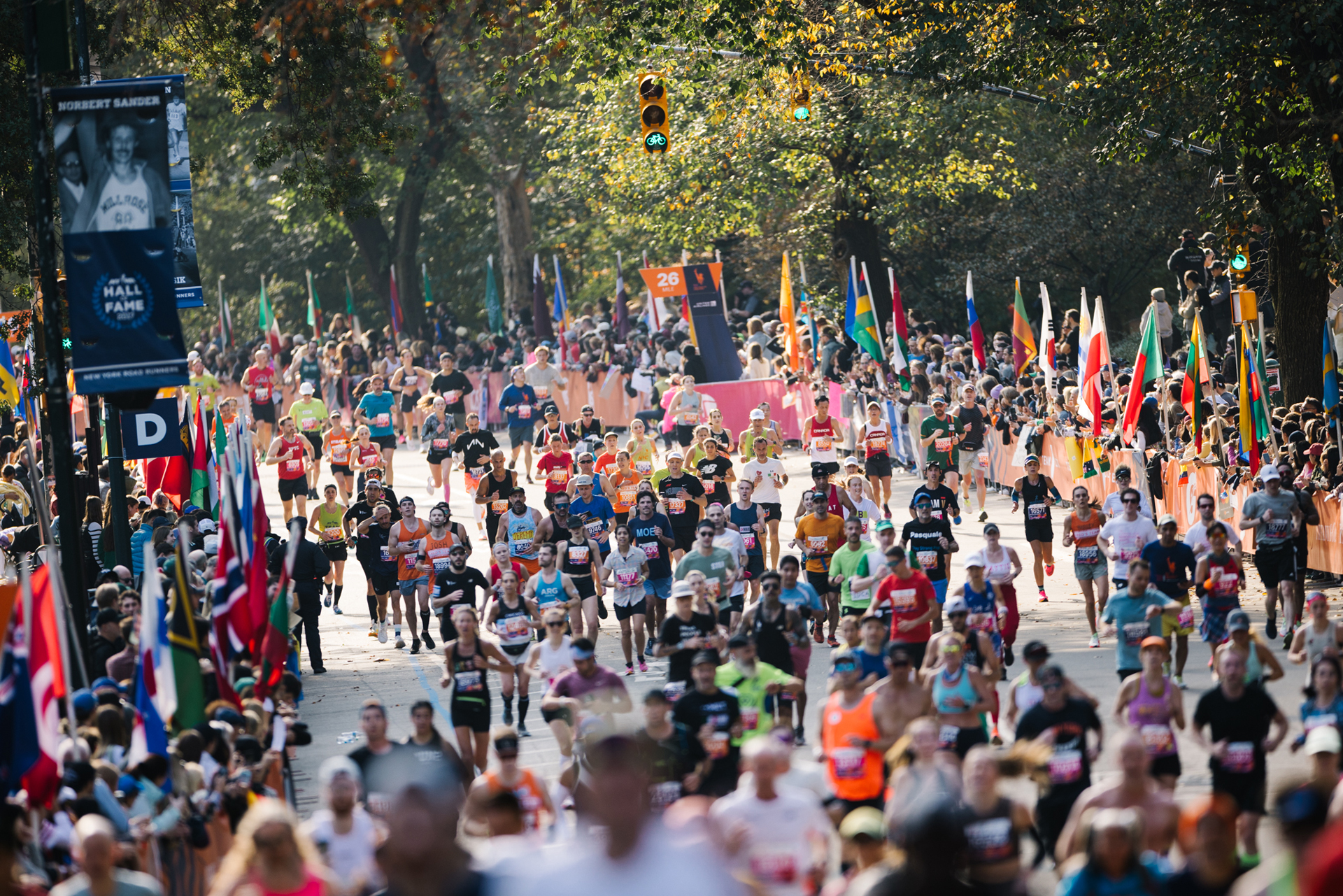
SUPPORTING THE NEW YORK CITY MARATHON
Will you be among the two million spectators? If so, it’s possible to see runners at numerous points on the course, but know that it’s going to be busy on the streets, wherever you are, and may take some good forward planning. The NYRR website offers tips for supporters (and those wanting to watch at home).
There is live tracking of your runner on the official TCS New York City Marathon app. It’s not a GPS tracker, but it uses a runner’s pace at certain tracking points to help you know when to expect them (but bear in mind that they may slow down or speed up).
Two of the most popular areas are on 1st and 5th. You’ll see runners at miles 17-19 and then 22-24, and in between spectators just need to walk a few blocks. But these areas are very crowded with people because it’s the easiest way to see runners without travelling far, so spectators may be three or four deep, making it hard for runners to spot family and friends.
A good place to start is near 4th and Flatbush in Brooklyn as you have easy access to a lot of subway lines (just know that you’re near mile 8 of the course, which can be a little hectic, so either walk towards mile 7 or 9). From there it’s easy to head into Manhattan.
If you want to see runners early in the race, then make sure you know what colour bib they are wearing as this will determine their route (pink runs a slightly different route) and which side of the street they’ll be running on (orange is on the left side of the street, and pink and blue are on the right).
THE BAG COLLECTION AND MEETING POINTS AFTER THE NEW YORK CITY MARATHON
As you pass the finish line you’ll collect your medal and a NYC Marathon fleece-lined poncho (keep these – they’re amazing!), plus a post-race recovery bag which includes water, Gatorade, pretzels, Maurten solid bar and a New York-grown apple.
There’s a long walk after the end of the race, through the race village and past baggage collection. It may take up to 30 minutes from finishing for you to exit the race area.
There is one final timing mat at the race exit. This can help friends and family know when you’ve left the race area.
All runners leave the race village at 77th St, by the American Museum of Natural History. There is a family reunion area (on 66th), but it may be better to plan a meeting place in advance, especially if you won’t have a phone on you. Also make a plan for how to get back to your hotel so you know the journey to take.
Do not take a pedicab after the race! They can charge outrageous amounts to take you a very short distance. It’ll be hard to get other cabs, but there are several MTA lines within a few blocks.
HOW TO ENTER THE NEW YORK CITY MARATHON
There are several ways to enter the NYC Marathon.
Many runners enter via a ballot. The numbers entering the ballot increases every year, so your chances of getting in decrease. There’s around a 5% success rate of getting drawn in the lottery.
The majority of runners have qualified via the 9+1 NYRR program, which is really only an option for locals. More on the 9+1 program here.
The second-highest number of runners comes via sports tours. This is the best way for international runners.
There are also places for time qualifiers of both NYRR and non-NYRR races, though NYRR racers have more chance and it’s a fastest-first system.
It costs $255 for NYRR members and $315 for non-NYRR members.
Here’s more on how to get into the Marathon Majors.
***
Do you have any tips for runners at the New York City Marathon?
All images from NYRR

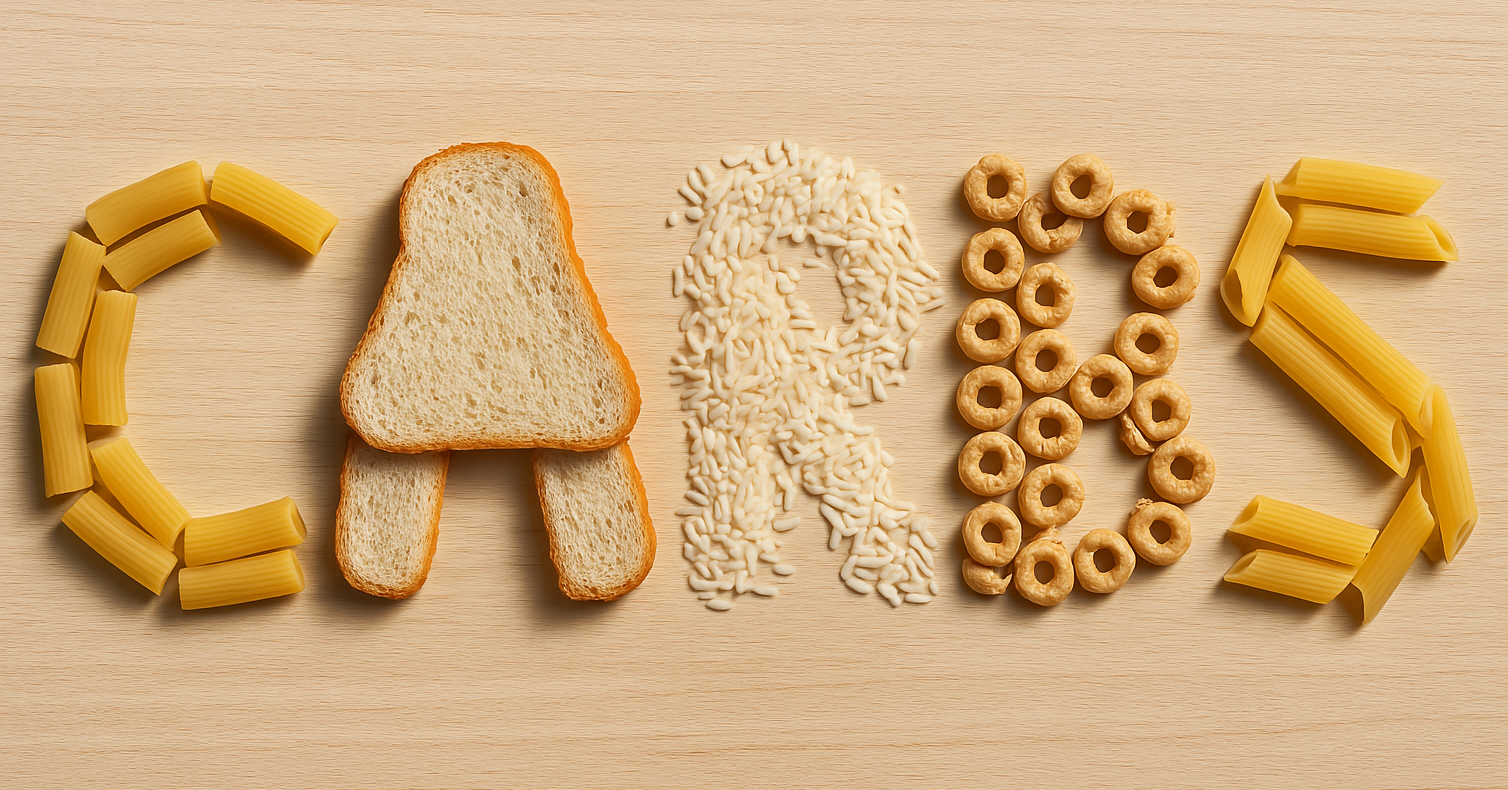
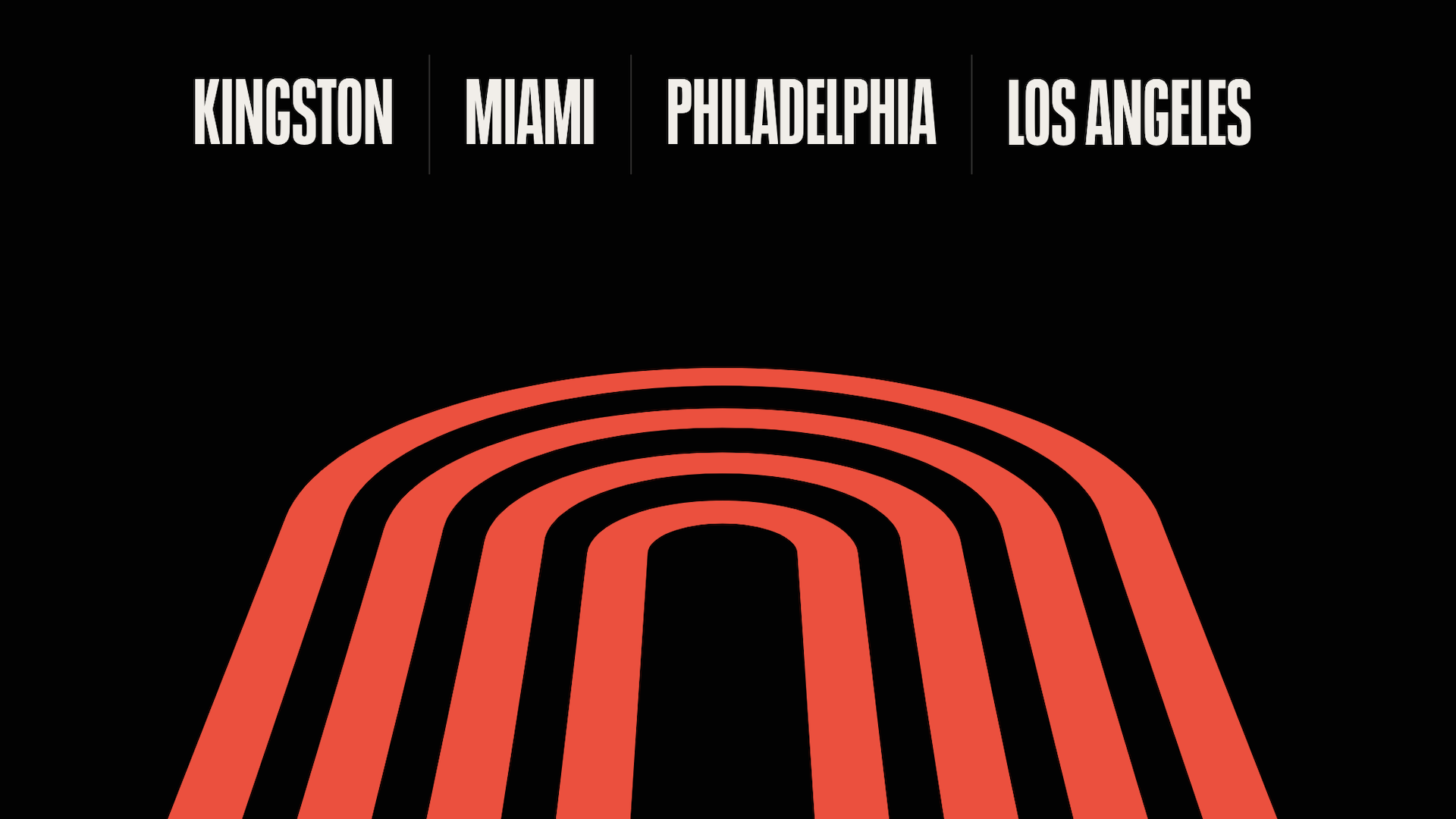
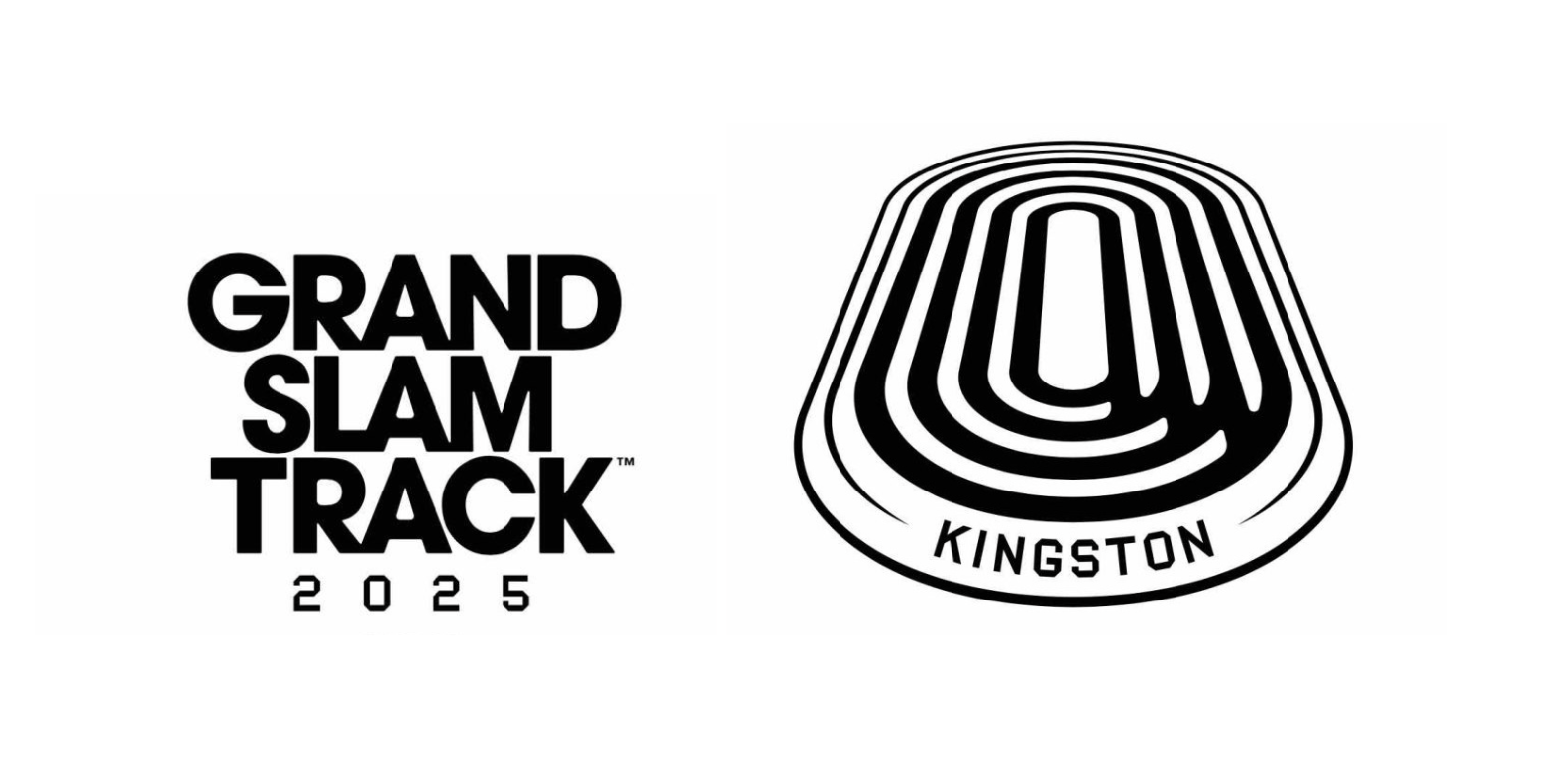
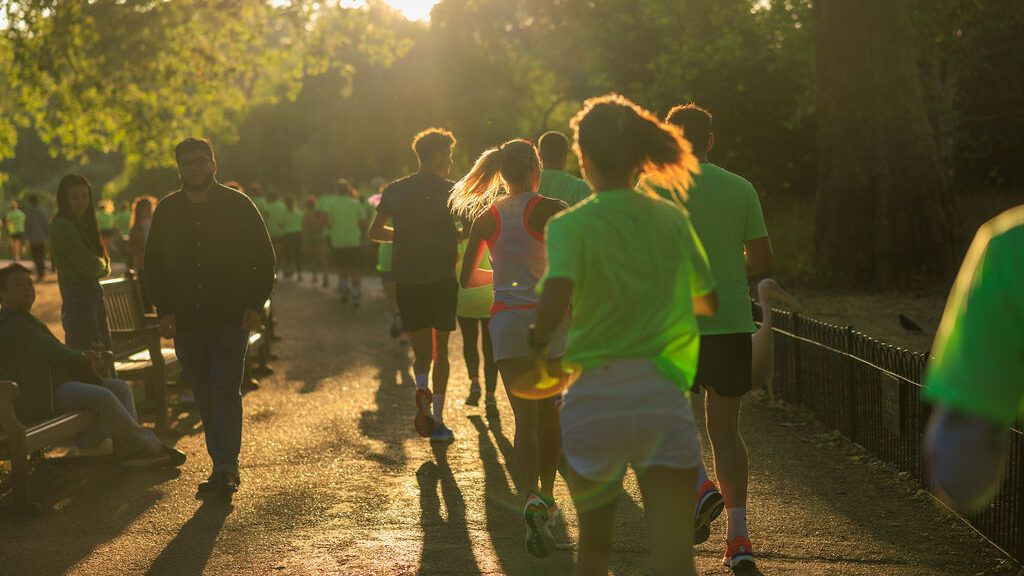
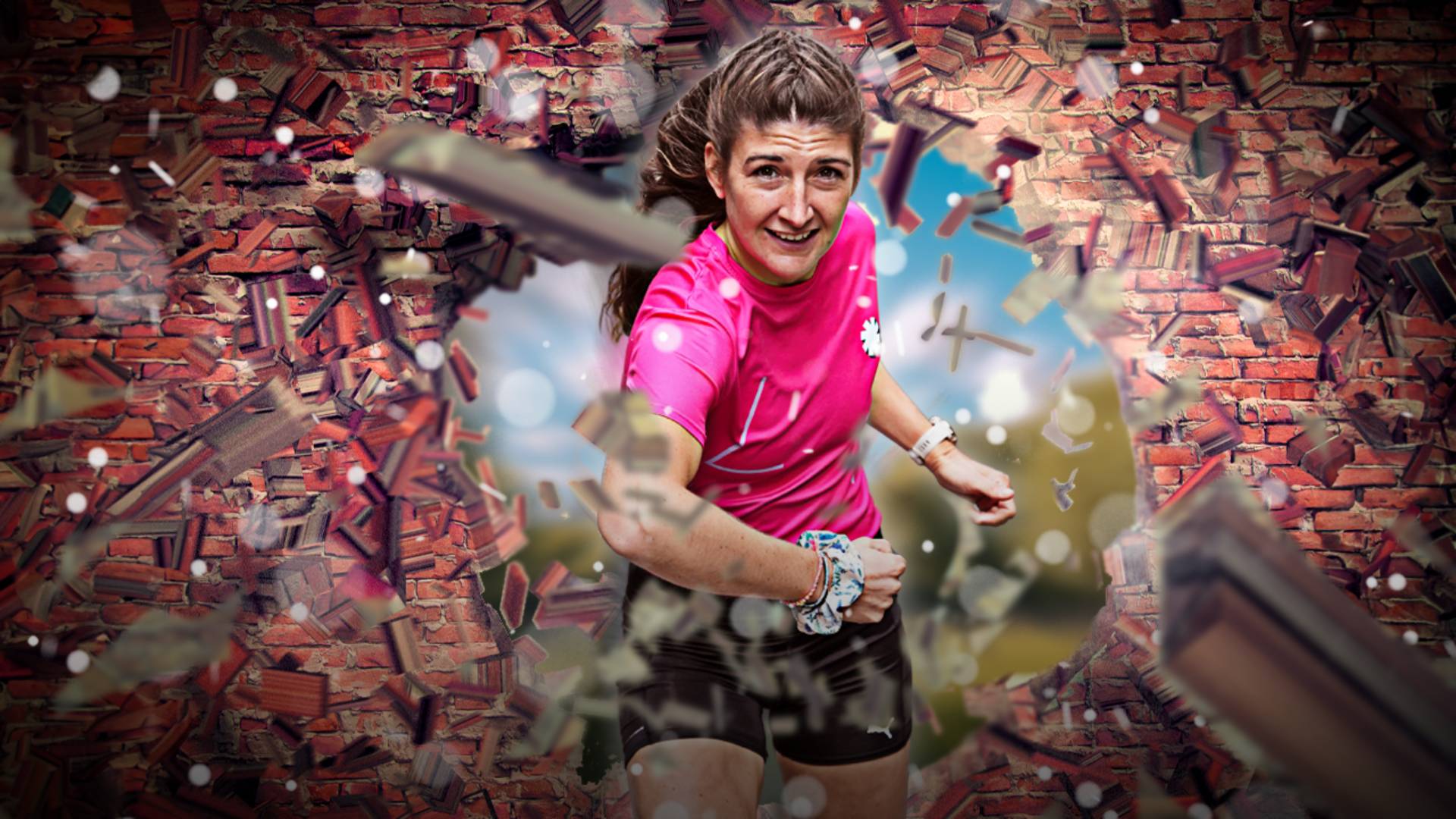
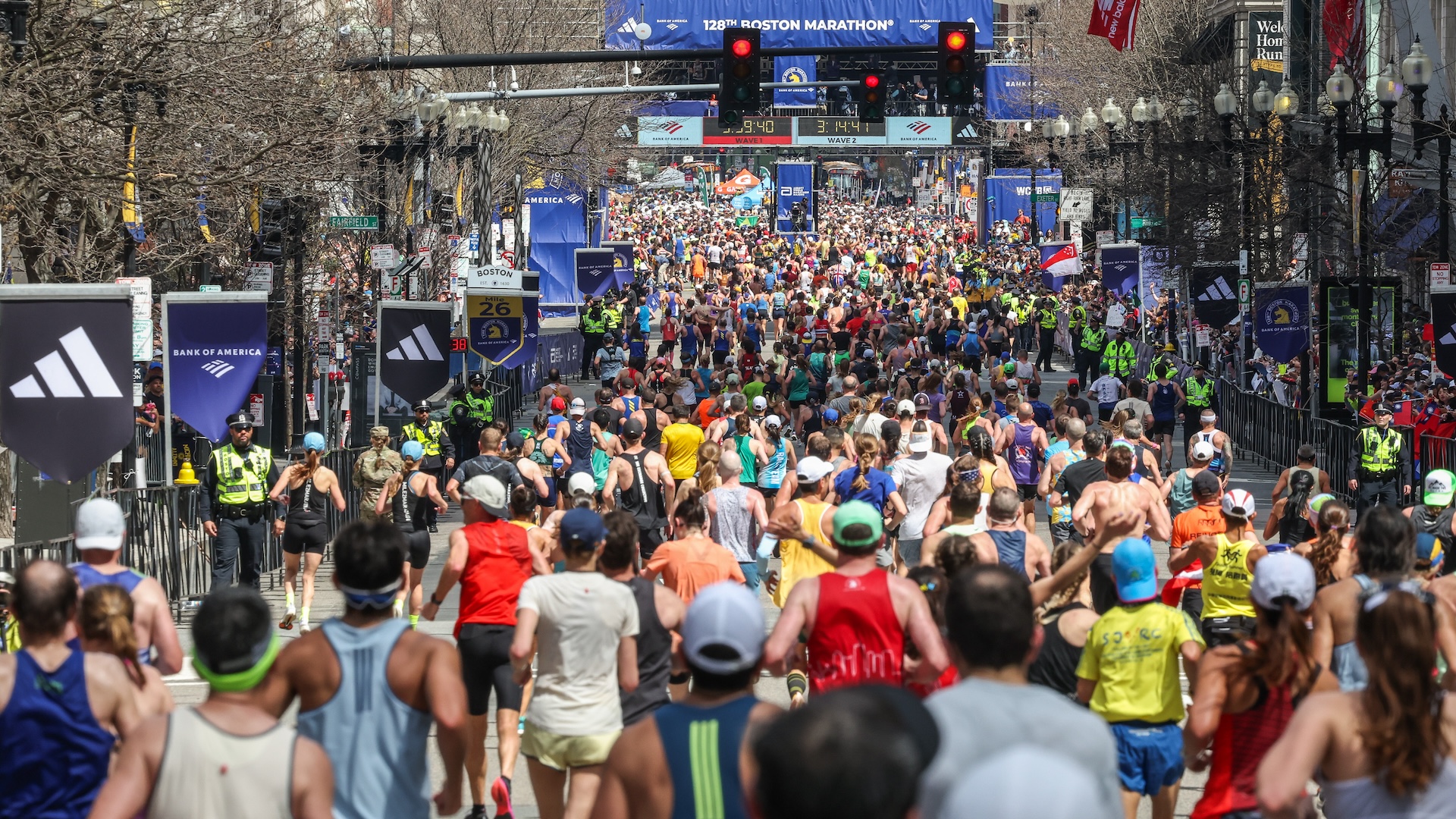





















Running News
Ingebrigtsen Stars at World Athletics Indoor Championships 2025 – Plus All The Winners!
Sam Ruthe Is First 15-Year-Old To Run A Four-Minute Mile!
Eliud Kipchoge Will Run The 2025 Sydney Marathon!